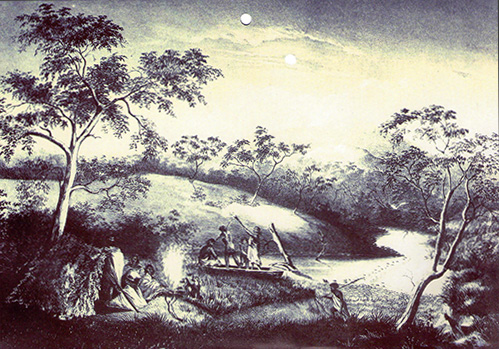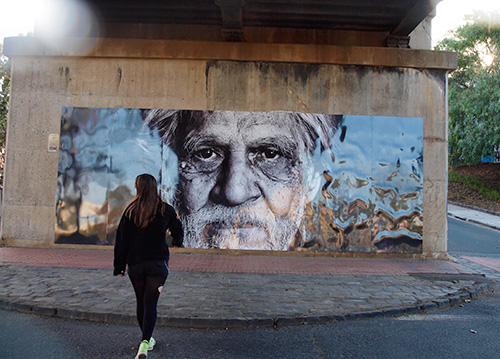First People

The Europeans were not the first humans to walk these lands, of course. They were already occupied by the Aboriginals who were soon swept aside by the coming tide of oursiders. Despite, which evidence suggests, being there for about 40,000 years, if not longer.
An article in the Footscray Advertiser 18 October, 1934 says the Footscray Aboriginals were very interested in the white man’s big canoes on the Maribyrnong at first and tribes came from inland to view the sights.

Lithograph by F. Cogne in Troedel, Charles. Views of Melbourne and Victorian Scenery, Melbourne 1865. Held by the National Library of Australia.
However, they became particularly annoyed with the noise made by the Europeans’ cattle and dogs, because they frightened all the native game out of the district, and they danced war corroborees in protest.
The article says there was considerable friction at times with the Europeans and some resistance – ” The hostility of the blacks made squatting slow”. However it didn’t stop it, the tribes soon dwindled and little if any evidence remains of those thousands of years of occupation along the Maribyrnong River in Footscray.
Who were they? According to Gary Presland of the Victorian Archaeological Survey there were two tribes in the Melbourne area at the time, the Woiworung and the Bunurong.
Each tribe was made up of several clans or bands of 30 – 35 members, who hunted, fished, farmed and foraged together. There was a group that were based where Footscray Park is now located. What is now an ornamental pond in Footscray Park was once a billabong where the clan camped.
What impact this early contact had on our forbearers is hard to say as little remains but a few names, particularly the name of the river, the Maribyrnong and Maribyrnong Street. Although known as the Saltwater River for most of the early Europeans days in 1906 the river was given an anglicised version of the original Aboriginal name, which was originally written as ‘Mirring-gnay-bir-nong’.

For more information about Aboriginal people in Melbourne’s western suburbs refer to…
https://livingmuseum.org.au/still-here-introduction/
